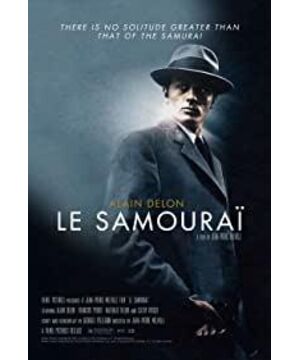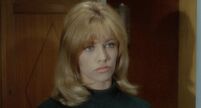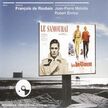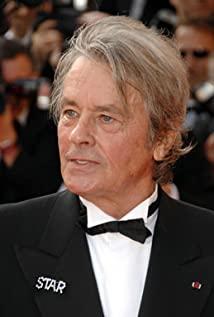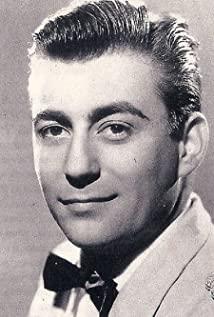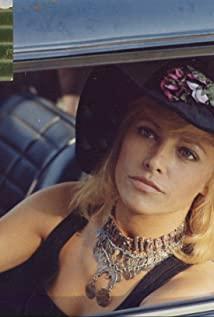- Melville and his film
a
Jean - Pierre Melville on October 20, 1917 was born in a Jewish family in France, formerly known as Jean - Pierre Grew Bach (Jean-Pierre Grumbach). In 1917, the film industry had just started not too long, just like a sentence in "One Hundred Years of Solitude": "This world has just begun, everything is too new, and you have to point your fingers." Just two years before Melville was born, that is, in 1915, Hollywood just broke away from many seaside towns in South California and became the base of a small film company; the following year, in 1916, Griffith Si's "Party Facing Differences" has just been completed, and almost all the film narrative language has been updated; three years later, in 1919, Flahardy led a team to Hudson Bay to shoot "Nanuk of the North" and use the camera Record truth. These three things are of great significance to Melville as a teenager.
If you haven’t been obsessed with Hollywood, "Party Together" and "Nanuk of the North", when future generations are sorting out film history, Melville's name may not appear on it and put it together with these pioneers. Share the undertaking relationship on the same timeline.
When he was a teenager, Melville was already a big "shadow idiot", lingering in the cinema. Later, he said: "Watching movies is the best profession in the world." So he spent a long early time in the dark cinema. At that time, around the 1830s, Paris cinemas still showed a steady stream of early Hollywood movies, including Griffith, Chaplin, John Ford, Howard Hawkes and John. Houston’s works are even silent documentaries made by WS Van Dyck and Vlahadi. The names of these directors later appeared in Melville's filming record book, and were ranked as "63 Greatest Directors in the World" according to his obsessive criteria. In any case, the impact of his early viewing experience on him is hard to estimate. The mirror images projected on the screen form part of his mental structure and are the most indestructible part. It's like what he said: "I believe that you must love movies crazily to make a movie." When Melville received a birthday gift with a 16mm camera, he turned it around. At this time, a fan of American novels and a fan of film became one. From then on, those American heroism and martial arts spirits were mixed in his images and became an endless source of motivation.
It is difficult to verify whether Melville was first passionate about American novels or Hollywood movies first, but it is certain that he loves both things at the same time and will remain the same throughout his life. People call him "an American in Paris", saying that he is one and one thing will not be missed in various texts about Melville-the young Grubbach is fanatical about the American writer Herman Melville’s novel was renamed Melville. This is why, in the world created by the director Melville, there will always be a man in the "moby dick" written by the writer Melville-he is stubborn, cold and unkind. The purpose is unscrupulous, and there is no scruples about death.
In 1937, 20-year-old Melville entered the army and participated in World War II. After the end of World War II, he retired. For him, several years of service experience is as important as the experience of watching movies when he was a teenager. The war not only brought him the material in future movies, but also gave him the precipitation of a deep spiritual temperament-whether it is "The Silent" "Sea" or "Shadow Army", both with the shadows and fears of the war; and the protagonist in each of his films has the indifferent background of a soldier. After retiring, Melville wanted to join the ranks of film production. He applied for membership of the French Technicians Association, but was rejected, and he did not give up. In November 1945, he started from scratch, founded the "Melville Independent Production Company", and directed the first short film "A Day of the Clown" in 1946, which can be said to be a tribute to Chaplin, and From this time on, he himself held all the positions of screenwriter, director, producer, etc., which later became a model for independent filmmakers to imitate. By 1947, Melville personally directed a piece of "The Silence of the Sea" with extremely low production costs. At that time, his method of ignoring the tradition of the French film industry was very popular and was especially appreciated by Cocteau, 1950 In 1999, Cocteau provided nearly 20 million francs and asked Melville to direct his novel "Horrible Children". This is a movie with no gangsters, no killers, full of Gokdor’s nightmare scenes. Although the cooperation process was very unpleasant, the film was a great success. The tense relationship between the two made the film a neurotic atmosphere, which seemed mysterious and changeable. Therefore, Melville was hailed as the most talented newcomer after the war. However, since then, he has also understood where he really should head, and he has no hesitation in exploring the subject of gangsters. In 1955, he filmed "Fever" ("Bob the Gambler"), a work that was completely imitated by Hollywood gangster movies. "Second Breath" was filmed in 1966. In the filming of "The Lone Killer" in 1967, Alan Delon played the coolest killer in history, Jeff Costello. This movie is considered to be one of the most accurate movies in the history of film. In 1969 filming "Shadow Army", Melville used this film to recall his days when he joined the resistance organization during World War II. "Red Circle" was filmed in 1970. In 1972, the last work "Big Dawn" was filmed.
two
I think that Melville's excellence is not in his advertised style, but in the smooth and precise narrative flowing under these seemingly beautifully wrapped black styles. In other words, his stylization-those cold, concise images only serve part of the narrative.
For example, in 1947, the 30-year-old Melville completed "The Silence of the Sea". In the film, a German military officer spends the night in an old French man's house. For a whole night, the dark shadow and gloomy expression by the fire constitute a very stylistic monologue. The German military officer has been chattering about his past, lover, and lover. Faith and literary hobbies, and the answer to him is endless silence. In this film, the footage is very cold and contains many facial close-ups. Some people say that Melville used this to express tribute to Dreyer's "The Passion of Joan of Arc." I think that if you consider it purely as a tribute, Melville will make an American movie such as "Manhattan Two Walks" instead of a personal experience of war memories. It was what he wanted to express that prompted him to use the lens to stick to the face of a person, to grasp the dullness and depression of the rapid change of light and shadow-for Melville, what he wanted to express and what technique could be the most accurate. It is an innate talent.
According to the traditional concept, "The Terrible Child" is the enlightenment of Melville's creation, but in fact, it is just a broken work. It is a demarcation point in Melville's creation, at this point, he resolutely parted ways with all "differents"; he said no to everything opposed to his own aesthetics. It was at this demarcation point that Melville was completely broken into a Melville that only belonged to the black bandit movie. In "The Terrible Child", he opposes Cocteau's views, the conflict of aesthetic concepts, the struggle between control and being controlled, and also made him determined to control the whole in the future, and make his own creative style.
"Horrible Child" is a different kind. First of all, in Melville's entire creative history, from "The Silence of the Sea" in 1947 to "Big Dawn" in 1972, whether it is from the early shorts, rough short stories, or later The exquisite, proficient feature-length production, the spiritual core has not changed, and there is a line of black police and criminal crime throughout. In other words, the characters in his works always live in the external world, competing for power and wealth; not those in "The Scary Child", who are free and explore the inner spiritual world. In other words, Melville’s object must be concrete and real; while Cocteau is abstract and changeable, with a fluid nature, just like "The Terrible Child" is in an empty, claustrophobic house. Here, the out-of-control camera wanders in the stairwell following the sleepwalking Paul, which is a lens frozen in the space of the mind. In the small and messy room, the characters chattering quarrels and conversations, in the feminine world of Gokduo, full of crazy and deformed souls. However, Cocteau's fluid spirit is completely different from Melville's straightforward bluntness. This is a movie that brought Melville fame, but it doesn't fit in with his aesthetics. In Melville's overly calm and outgoing world, there will not be a dramatic scene of confusion.
In
the early 1930s and 1940s, Hollywood gangster, crime, detective, and thriller films flooded the European market after World War II. European fans could be completely immersed in the black vortex of early American films. At the time, France named these films film noir, and there were many films imitating American crime films. For example, Jacques Baker's "Hole" and "Golden Helmet"; Henry-George Cruzot's "Crow" during World War II, "Devil" after World War II, and so on. In the imitation of American film noir, Melville was not the first to eat crabs, but later his films became the endorsement of French film noir because of his extremely personal style.
In the first few films, Melville was like a faithful apprentice in Hollywood, the most obvious example is "Manhattan Two Walks" (1959), and even the background and characters were moved to Manhattan, New York. In 1955, a "Fever" became Melville's first real entry into film noir, and its set off bandit film seemed to follow suit. He inherited many traditional elements and visual styles of classic Hollywood noir films. The story is based in big cities. The empty streets and small and dark apartments have become the most frequent scenes. The rainy night has become the time for the characters to choose to haunt and activity. The traffic lights and the city lights are nothing more than a stroke in the lens. What is really presented is often rare human traces. Poor streets. People who melt into the night in the corner of the city are given natural concealment and protection. In addition, the low-key, low-angle night lighting in "Eyeliner", the unstable composition, and the recurring black diagonal stripes, Belmondo often hides in the night, and the face is covered by shadows. At this time, Melville presented his American complex on his screen more through precise imitation rather than transformation, but as the exploration phase ended, he said, "I am not shooting American movies in France. I am. The theme of the United States must be changed." From then on, a Melville started filming his American movies with a French touch.
Four
"I'm so stupid, I am not afraid of destruction, I want to go back."
-Melville
In 1967, Melville’s studio caught fire during the filming of "The Lone Killer". This sudden blow caused him to fall into despair and depression. After a period of calm, he said the same thing and relied on the loan. The device completed the movie. However, in fact, the declaration of "I want to go back" did not lead him to fully return to the path he had pioneered before. It was like Nirvana after destruction, guiding him to a new crossing. What we saw in "Lone Killer" is still It is a cold killer wrapped in a windbreaker and a narrow-brimmed hat, it is still the gun in the pocket that can be lifted at any time, and it is still a huge shadow projected on the wall. It can be said that the visual style is still highly unified with the previous works. ——The most visual change should be the color change from black and white to color, but in my opinion, this technological evolution is nothing but black and white movies with color film for Melville—but in the auditory sense Upper Melville is walking towards the extreme of silence. Not only do we fail to hear the chattering arguments and excuses between the characters, the background music used to set off the atmosphere in "Fever" is also abandoned. In "The Lone Killer", Alan • Jeff Costello, the killer portrayed by Deron, is not only cold but also reticent. In the small apartment, the smoke slowly spreads and stagnates in the air, the fan rotates slowly on the ceiling, and Jeff lies indifferently on the bed. Without saying a word, if it were not for the occasional small chirp of the bird in the cage, time would freeze at this moment. The film was in a similar state of aphasia during the first ten minutes of the film. This pursuit of silence developed later. Even the ambient sound was temporarily blocked under the director's strict restraint on the sound, so there was the "silent night" of the "night thief" scene in "Red Circle". In classic Hollywood genre films, dialogue or lines have become the most important means to solve plot problems, and it is also a common method for explaining characters’ history and relationship between characters. Exquisite line design and superb screenwriting skills are based on the traditional drama structure. The above is what the classic Hollywood crime melodrama pursues. For example, "Laura" ("Laura" 1944), which is also known as the masterpiece of early film noir with "Double Compensation", has achieved a dramatic effect in the narrative structure. And the dialogue plays an important role in the achievement of this kind of mysticism, so in my opinion, the alienation of sound, especially the lack of dialogue in Melville’s late films, is essentially his gradual departure from American noir films. The re-enactment of the film, and turned to the creation of noir film with French elegance (tame).
In terms of character creation, in the later works such as "Lone Killer" and "Red Circle", Melville seems to try to portray the protagonists in his movies as men with a mixture of mystery and gentleman temperament, they are no longer like "Fever" Unlike the Bob, Cyrian and Morris-like characters in "Eyeliner", there are still some brutal and impulsive inherited from the spirit of the American West. What Melville gave Jeff them is graceful demeanor and a kind of penetration. Of course, from another point of view, this is also related to the frequent collaboration between Melville and Alain Deron in the later period. Deron’s personal temperament requires Melville to make character adjustments for this purpose. Long's tailor-made character moves to the extreme in calmness and reticence. The long windbreaker and the narrow-brimmed hat can be regarded as a kind of inheritance to American gangster films, but more as a kind of hidden restriction. Such attire limits the instinctive mobility of people and eliminates the close combat. In a contest of primitive brute force like the body, Melville wrapped the tyrannical behavior that the character can stimulate due to emotional impulse in a trench coat and a hat, instead of the incredible calmness and quietness that the character was given, a kind of inaction. Under the principle of dynamic handling, there is actually great courage. The inner personality tension of these characters is fully expressed in "Red Circle". Corey turned a blind eye to Weigao who was being sought secretly hidden in the trunk of his car. Helping him through the level, Corey's magnanimity and sense of morality are released in such a calm expression. The calmness is an indispensable point of the characters in Melville's late works. At the same time, the new setting of the character's personality is bound to be accompanied by narrative adjustments
. The calmness is also Melville's narrative attitude and calmness. , Introverted and restrained narration is his usual style. Melville seems to be so "cold" all the time, even in the handling of key plots and important moments, he is not chaotic, continuing his usual calm and logic, and abandoning Hollywood Crime films often use "incitement" methods. In Melville's later creations, he refused to imitate Hollywood's extensive use of subjective music to incite emotions, and rejected Hollywood's rapid editing. He always hurriedly introduced the characters and the history of events, the more critical the characters. The more he is aphasia, he devotes his energy to the attachment to each action, and the correspondingly is Melville's control of emotions.
Although it is a crime subject, there is no excessive worship of plasma in the world of Melville's black images. The killing scenes are always handled cleanly and quickly. The deadly simplicity of a shot echoes the natural and quiet death of the shot. "Lone Killer" "The murder in the office in the office reached its limit in this sense. Although there are no cruel methods of killing appear in the film, this unhesitating attitude, decisive firing and ischemic death all create a kind of death. Even worse-the dry and cracked fear of death. In the choice of moral and emotional standpoints, Melville is different from Hollywood noir films in the late 1940s and 1950s. The post-war American noir films are full of uncertainty, restless restlessness, and suspicion, and they hold on to American life. An unprecedented derogatory attitude. Film noir criticizes and criticizes values in terms of morality, ideology, and system. For example, Billy Wilder often uses morality as an allegorical goal and makes moral comical ridicule. Melville’s calmness prompted him to refrain from making any moral and emotional judgments on the characters, choosing to remain morally neutral, and not to add personal moral costs to the film, so he regretted, pained, pity... these tragic heroes of achievement Indispensable, they are all empty here in Melville. Compared with the value judgment of American film noir, Melville pursues the use of philosophical visual language to describe the lonely, desperate and courageous souls. Gangs and killers have become his motifs, and are different from Hollywood film noirs. One difference lies in the fact that Melville has tapped deeper philosophical potential under the appearance of betrayal, conspiracy, robbery...this series of criminal facts, which also corresponds to the purely dramatic elements mentioned above. The tendency in the film dissolves, because what he really cares about is the sinister and complicated interpersonal and social relationships, the fighter-like courage that people burst in the Jedi counterattack, and the friendship between brothers. Of course, there is also the inevitable self-destruction. destiny.
Melville is different from Hollywood film noir in characterization, narrative style, and moral orientation. His affection and great patience for details are beyond the reach of Hollywood directors. Perhaps we can understand this as a French national spirit. Melville put the elegant and meticulous feelings passed down by this nation into his movies, and a scene full of amorous feelings on the screen was born: American-style two-line telephones were transplanted into French-style dance halls, and Replace the Angklusaxon-style up-and-down curtains with French-style blinds...
As Melville said, "I am not shooting American films in France. I have to change the American theme to make them more suitable for French and European audiences. I use my own way to interpret American themes and turn them into a delicacy for French audiences. I don’t make American movies at all. One day you will see the proof, as I wish. I want to try if I can make American movies at all, then I will wear the hat of an American director.”
Five
Melville is a A true master of French film noir, he inherited the image style of American Hollywood pre-war period, inherited the tradition of French poetic realism, and had a cooperative relationship with a member of the avant-garde in the 1920s, Kokdo. However, he is completely different from his predecessors on a certain level, and he is taking a completely different path. From today's perspective, his aesthetics is still very cool and avant-garde, it seems that he is a person who is ahead of the times. He first pioneered the tradition of independent production and influenced the production methods of the French New Wave. Godard and Truffaut admired him for a period of time, but soon, in the late 1960s, the Film Manual began to hate him, rejected his aesthetics, and accused him of being a rightist. Melville said: "I am a rightist!", and then still go to make the movie he wants to make. In fact, as time passed, Melville proved more and more to the world that he had no intention of getting involved with politics. He was just a lonely person walking on his own dark road. As he said: "We will always be five lonely individuals-me, my wife and my three cats."
On August 2, 1973, Melville died of a heart attack at the age of 55. It is said that his great-grandfather, grandfather and father all died at the same time due to the same disease-the end of this fatalism, which coincides with the ending of a Melville film noir.
Reference
books:
1. [US] Christine Thompson, David Podwell: "World Film History", Peking University Press, published in January 2004
2. [America] Ginette Vincendeau: "An American in Paris"
3.[French] Henry Rhodes: "The Biography of Alan Delon", China Drama Publishing House, published in June 1987
4. Zheng Shusen: "Film Types and Genre Films", Jiangsu Education Press
Article:
1. David Sanjek: "FATE WEARS A FEDORA"
2. Zha Altman: "A Discussion on Genre Films", selected from "World Film" No. 6, 1985, Gong Zhufeng's translation of
Chinese and French film titles,
1947 "Le Silence de la Mer", "The Silent Sea"
1950 "Les Enfants Terribles", "Horrible Child"
1955 "Bob Le Flambeur", "Fever" aka "Bob the Gambler"
1963 "Le Doulos", "Eyeliner" aka "Informer"
1967 "LE" "SAMOURAI", "Lone Killer", also known as "Samurai"
1970 "Le Cercle Rouge", "Red Circle"
1972 "UN FLIC", "Big Dawn"
Part three and four were
published in "Film Magazine" with friends
View more about Le Samouraï reviews


